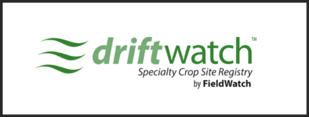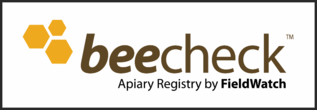Pesticide Safety
Pesticides are substances used to control pests. In landscapeand agricultural settings they most commonly include insecticides, fungicidesand herbicides to enhance plant health, aesthetics and production. Insecticides kill insects, fungicides kill fungi and herbicides kill plants and weeds.
The majority ofpollinators are insects and can be negatively affected by non-target applications of insecticides. Applications of fungicides and herbicides are now thought to have impacts on pollinator populations as well.
Proper use of pesticide products is crucial. Pesticides and pollinators can coexist but the pesticide user must abide by the label and do their part to minimize risk to bees and pollinating insects visiting crops and ornamental plants.
If a pesticide must be used, choose the least-toxic material possible; read and follow label directions.Read and follow pesticide labels before purchasing; many pesticides are harmful to bees and other pollinators. Use the product properly by always following label directions as required by law.
The Colorado Department of Agriculture recommends care when applying any pesticide, regardless of type, to help protect our state's pollinating insects. If pollinators are active in your landscape:
- Always consider alternatives to pesticidesfirst. Use integrated solutions to manage a plant problem.
- Choose the least toxic pesticides whenever possible.
- Avoid applying all pesticides including insecticides and fungicides during bloom on ornamental plants such as roses, lavender, crabapples, and lindenthat attract pollinators. Apply pesticides after flower petals have fallen.
- If there is no way to avoid applying a pesticide to plants that are attractive to pollinators, spray at dusk when bees and other pollinators are not active.
Other Pollinator Pesticide information
- Steps you can take to make your landscape more enviro-friendly
- Natural Pesticide Products
- Environmental Pesticide Education Program
What are neonicotinoids?
Neonicotinoids (or neonics) are a class of systemic insecticides. Systemic means that the chemical is taken up by a plant through its roots or leaves and moves through the plant just like water and nutrients do. Neonics are no more or no less toxic to pollinators than other insecticides;however, they have been singled out because of their widespread use and systemic properties.
Neonics were developed in the 1990s and have since become one of the most widely used group of insecticidesfor home, garden and agricultural uses. They are relatively safe for use around people, animals and the environment. Used according to the label directions, neonics should pose little risk to pollinators. However, as with any pesticide, if the user does not follow directions and applies the product to plants in bloom when pollinators are visiting, pollinators may be harmed.
For more information on pesticide safety refer to the Colorado State University Environmental Pesticide Education Program.
Managed Pollinator Protection Plan (MP3)
The Colorado Managed Pollinator Protection Plan is being developed to address and identify policy and best management practices that protect all pollinators important to Colorado agriculture and environment. For more information on the development of Colorado's MP3 program, please visit the Colorado Department of Agriculture pollinator workgroup page.
Driftwatch, Fieldwatch and Bee Check programs
The Colorado Department of Agriculture supports Driftwatch, Fieldwatch and Bee Check programs. These programs offer voluntary communication tools that enable crop producers, beekeepers, and pesticide applicators to work together to protect specialty crops and apiaries through the useof mapping programs. They are not a substitute for state regulatory requirements.


